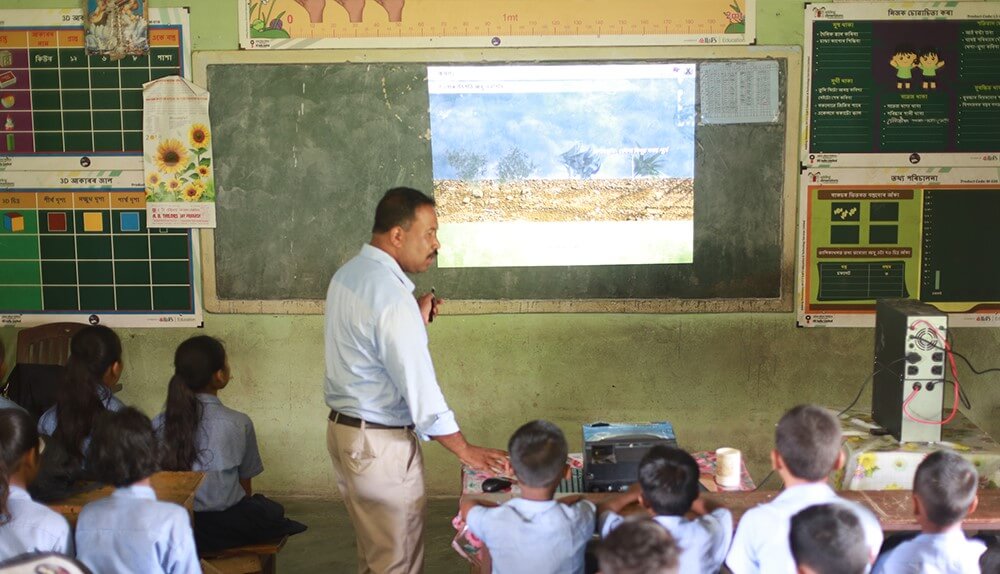Blogs
Hybrid Classrooms: Bridging Gaps in Supplementary Education

In our ever-evolving educational landscape, the concept of “hybrid classrooms” has emerged as a beacon of innovation. These dynamic learning spaces blend the best of both worlds: the traditional face-to-face interactions and the flexibility of online learning. As we navigate this educational frontier, let's explore how hybrid classrooms bridge gaps in supplementary education, fostering enhanced outcomes for students.
The Quest for Educational Excellence

Imagine a world where every student has equal access to quality education. A world where learning transcends geographical boundaries, economic disparities, and societal constraints. This vision drives the pursuit of supplementary education—a powerful tool that complements formal schooling. But what exactly is supplementary education?
Understanding Supplementary Education
Supplementary education encompasses a wide spectrum of learning experiences beyond the conventional classroom. It includes after-school programs, tutoring sessions, online courses, workshops, and enrichment activities. While formal education provides the foundation, supplementary education fills the gaps, reinforces concepts, and nurtures individual talents.
The Gaps We Seek to Bridge
- Individualized Support: In a bustling classroom, teachers strive to meet the diverse needs of their students. However, some learners require personalized attention. Supplementary education steps in, offering one-on-one tutoring, mentoring, and tailored resources.
- Concept Reinforcement: Ever felt lost in the whirlwind of algebraic equations or historical dates? Supplementary education revisits these concepts, reinforcing understanding and boosting confidence.
- Holistic Development: Education extends beyond textbooks. It encompasses life skills, creativity, and character building. Supplementary programs introduce art, music, sports, and critical thinking—nourishing well-rounded individuals.
Enter Hybrid Classrooms

Now, let's introduce our protagonist: the hybrid classroom. Picture a space where physical and virtual realms converge. Students gather in traditional classrooms, their notebooks open, while simultaneously accessing digital resources on their tablets. Here's how hybrid classrooms address the gaps in supplementary education:
- Flexibility: Hybrid classrooms allow students to tailor their learning journey. Whether they're attending in person or logging in remotely, the learning content remains accessible. This flexibility accommodates diverse schedules and individual preferences.
- Engagement: Imagine a classroom where discussions transcend physical boundaries. Hybrid learning encourages active participation through online forums, collaborative projects, and virtual breakout sessions. Students become co-creators of knowledge.
- Personalisation: Adaptive technologies in hybrid classrooms adapt to each student's pace and learning style. Whether it's an interactive quiz or personalized feedback, these tools enhance the educational experience.
- Supplementary Resources: Hybrid classrooms seamlessly integrate supplementary materials. From e-books to video lectures, students access a treasure trove of resources beyond the textbook.
Why Should We Embrace Hybrid Classrooms?
- Equity: Hybrid classrooms level the playing field. Students from rural areas, those with disabilities, or those juggling work and studies benefit equally. No longer bound by physical proximity, education becomes inclusive.
- Lifelong Learning: Hybrid classrooms instill the love of learning. They encourage curiosity, exploration, and continuous improvement. Lifelong learners thrive in this dynamic environment.
- Global Connections: Through virtual collaborations, students connect with peers worldwide. Cultural exchange, diverse perspectives, and cross-cultural understanding enrich their educational journey.
Challenges to Overcome
- Pedagogical Shifts: Educators must rethink their teaching strategies. Hybrid classrooms demand a delicate balance between synchronous and asynchronous learning. How can we maintain engagement without overwhelming students?
- Technological Hurdles: Reliable internet connectivity, user-friendly platforms, and digital literacy are essential. Let's ensure that no student is left behind due to technological disparities.
- Assessment Strategies: How do we fairly evaluate student performance? Traditional exams may not suffice. Creative assessments—such as project portfolios or peer evaluations—can provide a holistic view of learning.
The way forward
As we tread the path of hybrid classrooms, let's remember that education transcends physical walls. It's about igniting curiosity, fostering connections, and nurturing lifelong learners. By bridging gaps in supplementary education, hybrid classrooms empower students to reach new heights. So, let's embrace this educational fusion—a symphony of tradition and technology—for a brighter tomorrow. Remember, dear reader,
“Education is not a destination; it's a journey lit by the flames of curiosity and possibility”.
At Schoolnet, we go beyond conventional education paradigms, delving into the realm of Community and Supplementary Education (CSE). Our CSE services encompass a diverse array of programs, ranging from early childhood education to life skills and digital literacy initiatives. These programs are not just about imparting knowledge; they are about instilling values, nurturing potential, and catalyzing positive change in communities.
Through the generous support of corporates and public sector undertakings (PSUs) under their Corporate Social Responsibility (CSR) initiatives, we have been able to expand our reach and impact. By leveraging our extensive experience in the social sector, we bring a unique perspective to projects, aligning our themes with social development goals and adopting an internationally accepted shared value approach. This ensures that our initiatives not only address immediate needs but also contribute to sustainable, long-term change.
Schoolnet’s vision goes beyond academic excellence. We envision empowered communities where every individual has the opportunity to thrive and succeed. Through our CSE programs, we aim to bridge gaps, unlock potential, and create a brighter future for generations to come. To learn more about our vision and the transformative work we do, click here.




